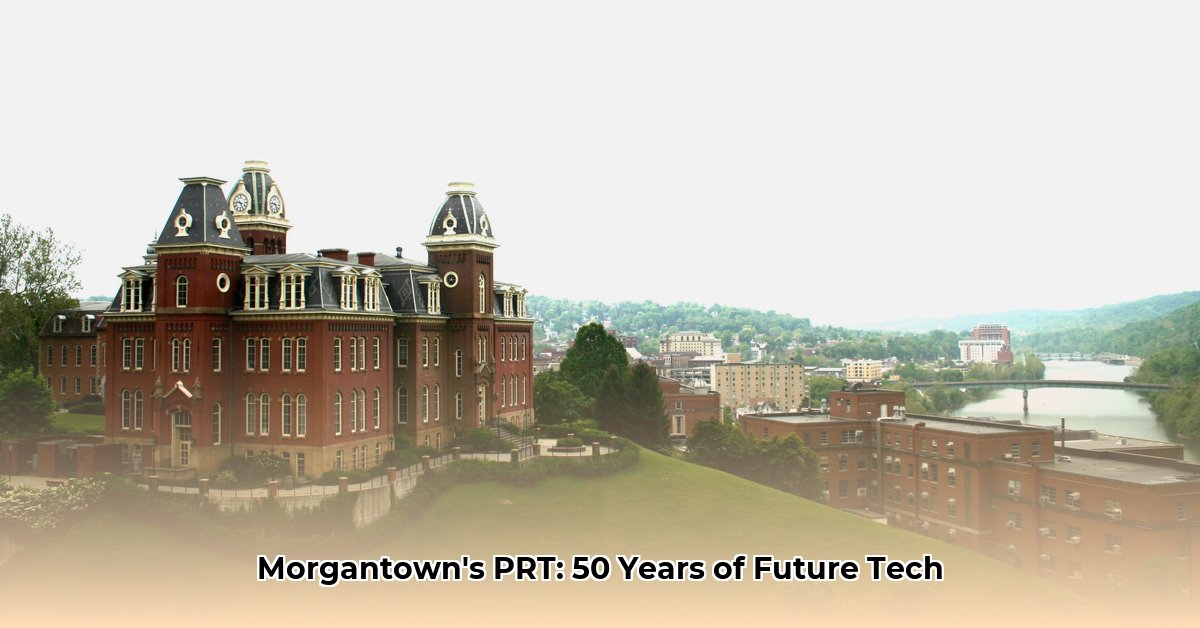
A Half-Century of Hill-Conquering Transit: The Morgantown PRT Case Study
Morgantown, West Virginia, presents a unique transportation challenge: a hilly terrain that significantly impacts traditional transit systems. For 50 years, the city has addressed this challenge with its innovative Personal Rapid Transit (PRT) system, a network of automated, electric vehicles traveling on elevated guideways. This case study examines the system's evolution, successes, challenges, and potential for future scalability, offering valuable insights into the application of automated transit technologies in complex urban environments.
Conquering the Hills: Engineering a Solution
The PRT's ingenious solution to Morgantown's hilly landscape lies in its elevated guideways. By bypassing the uneven terrain, the system minimizes disruption to existing infrastructure and creates efficient routes. This elevated design, a stroke of engineering genius in 1975, represents a significant departure from traditional ground-level transit systems, effectively demonstrating an approach that can potentially address similar issues in other hilly cities globally. How did the original design team overcome the logistical and technological hurdles associated with building and operating an automated system on elevated tracks in such a unique environment? This is a question that deserves further exploration.
Beyond the Ride: Technological Innovation
Opened in 1975, the Morgantown PRT was a radical undertaking. The concept of a fully automated, driverless transit system was largely futuristic at that time. The system's successful operation for nearly 50 years represents a significant achievement in autonomous transportation technology, proving the feasibility of this approach decades before the widespread adoption of self-driving cars. What specific technological advances have been integrated into the PRT system over the last 50 years to ensure its continued operation and efficiency—and how can these advancements help inform future designs and updates to similar transportation systems in the future? This is a question that further research can answer.
Scalability and Adaptation: Challenges and Opportunities
While the PRT's success on West Virginia University's campus is undeniable, its scalability to larger urban environments presents significant challenges. Replicating this system in a city like New York City would require substantial modifications, including longer routes, a greater number of vehicles, and a far more robust control system. The unique challenges presented by elevation in Morgantown have to be considered when planning for future expansion or replication. This raises the question: What are the specific limiting factors that define the potential scalability of the Morgantown PRT model, and how can these limitations be overcome in future designs?
Navigating the Future: Innovations and Technological Upgrading
The Morgantown PRT is not a static system; rather, it's an ongoing project. The integration of modern technologies such as advanced artificial intelligence for route optimization, enhanced cybersecurity measures, and energy-efficient power systems and vehicle designs present opportunities for improved efficiency and resilience. This necessitates continuous evaluation and adaptation to ensure the PRT remains at the forefront of automated transit technology. This raises another pertinent question: What technological advancements should be prioritized in future upgrades to the Morgantown PRT, and how can these upgrades be implemented in a phased manner to minimize disruption and maximize cost-effectiveness?
Risk Assessment and Mitigation Strategies
The long-term success of the Morgantown PRT depends on thorough risk management. A comprehensive analysis is essential to identify and mitigate potential problems, including system malfunctions, cybersecurity threats, funding constraints, and public acceptance issues (See below). These risks must be continuously monitored and reassessed to ensure the system remains safe, efficient, and reliable.
| Risk Category | Likelihood | Impact | Mitigation Strategy |
|---|---|---|---|
| System Malfunction | Moderate | High | Redundant systems, frequent maintenance checks, constant monitoring |
| Cybersecurity Threats | Moderate | High | Strong security measures, routine updates, security audits |
| Scalability Limitations | High | Moderate | Flexible design, phased expansion, adaptable technology |
| Funding Constraints | Moderate | Moderate | Diverse Funding sources, demonstration of strong return on investment |
| Public Acceptance | Low | Moderate | Clear communication, open dialogue with the community |
A Legacy of Innovation: Lessons Learned and Future Directions
The Morgantown PRT serves as a powerful case study in innovative transit solutions. Its success in addressing the challenges of a hilly terrain highlights the potential of automated transportation systems. By continuously adapting to technological advancements and addressing potential risks, the Morgantown PRT can serve as a model for future urban transit systems worldwide, demonstrating that even the most complex geographical challenges can be overcome with creative engineering and technological innovation. How can the lessons learned from the Morgantown PRT system help inform the design and implementation of similar projects in other cities facing similar challenges? This is a critical takeaway from this case study.